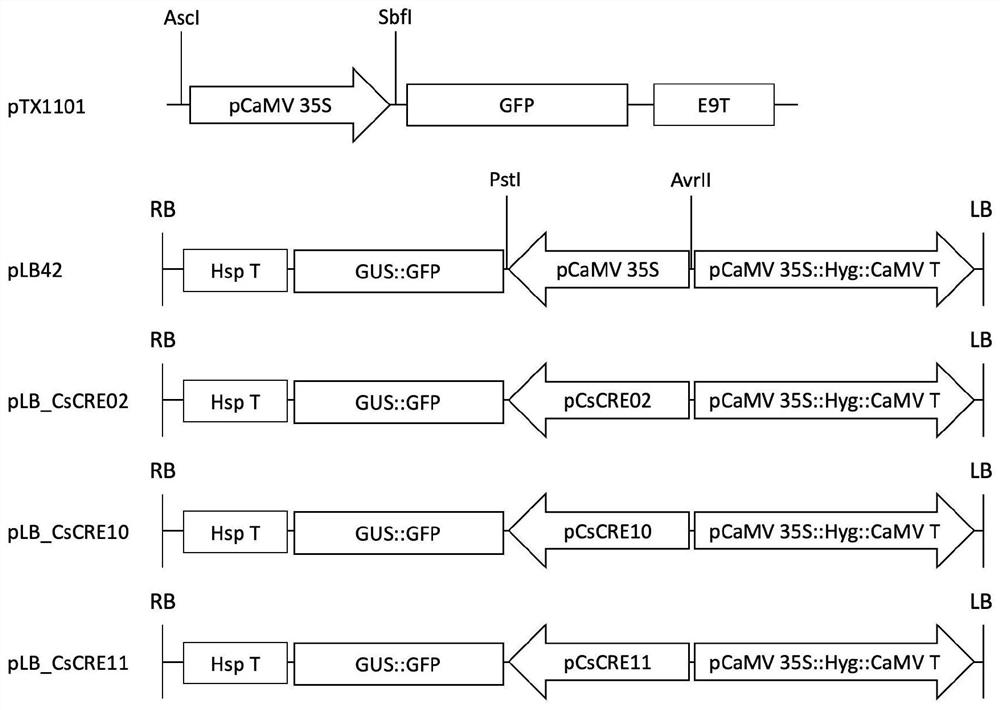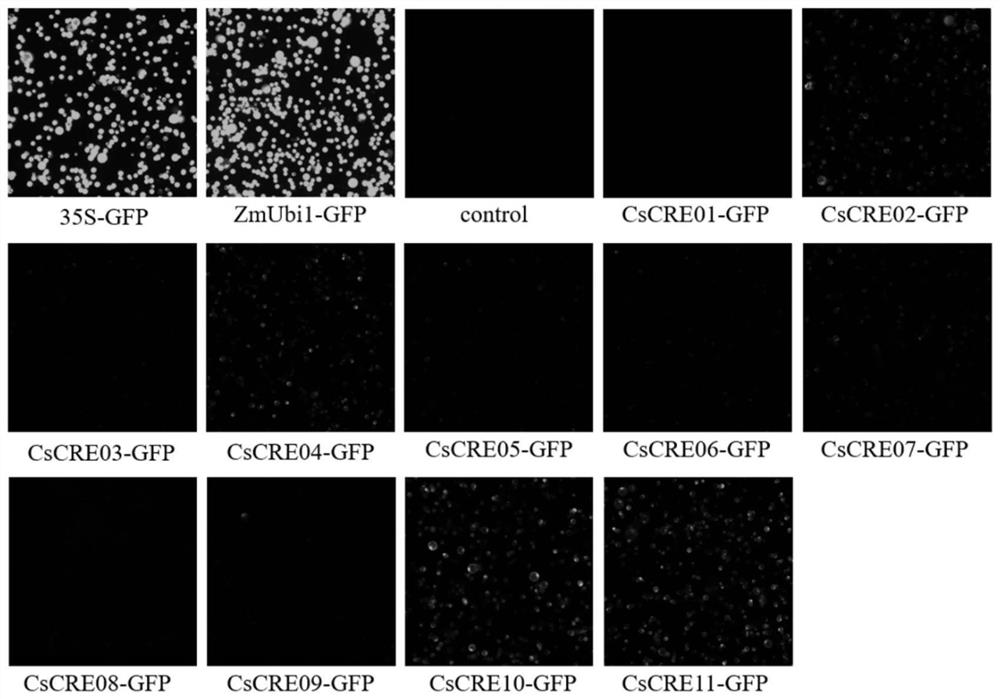Cucumis sativus endogenous promoter and application thereof
A promoter and molecular technology, applied in the field of cucumber endogenous promoters, can solve the problems of gene silencing, less selectivity, less research work on isolation of cucumber endogenous efficient promoters, etc.
- Summary
- Abstract
- Description
- Claims
- Application Information
AI Technical Summary
Problems solved by technology
Method used
Image
Examples
Embodiment 1
[0040] Example 1 Mining and Analysis of Cucumber Candidate Promoters
[0041] The RNA-seq (3 biological replicates) and ATAC-seq libraries (3 biological replicates) were constructed using the cotyledon of cucumber 7-day seedlings. In order to enrich the gene expression in different periods and tissues of cucumber, another 12 sets of RNA-seq data were downloaded from the NCBI public database. Firstly, the RNA-seq data is analyzed. After quality control to remove low-quality reads and sequence connectors, the original data is compared to the cucumber reference genome to evaluate the expression of each gene and calculate the expression of each gene in each sample. The average value of expression in , and the 30 genes with the smallest variance among the top 100 expression values were taken out, and 26 of them were selected as the key research objects in the next step. To further analyze the ATAC-seq data, first perform quality control on the ATAC-seq library, including removin...
Embodiment 2
[0042] Example 2 Comparative Analysis of Transcriptional Activity of Cucumber Candidate Promoters
[0043] In order to verify the transcriptional activities of the above 11 cucumber candidate promoter elements, the fluorescent reporter vector pTX1101 was selected (this carrier is a GFP fluorescent reporter vector, and the GFP gene transcription is initiated by the 35S promoter derived from cauliflower mosaic virus (CaMV). The terminator of the ketose-1,5-bisphosphate carboxylase small subunit (rbcS) E9 gene to terminate GFP gene transcription) as a backbone vector (such as figure 1 shown). The CsCRE01-CsCRE11 candidate promoter fragments were respectively amplified from cucumber genomic DNA using specific primers containing homologous sequences to the backbone vector, and the fragments recovered from the gel and the fragments of the backbone vector pTX1101 digested with AscI and SbfI were subjected to Gibson analysis. After assembling and replacing the CaMV 35S promoter on th...
Embodiment 3
[0061] Example 3 Transformation of Cucumber Hairy Roots Verifies the Transcriptional Activity of Candidate Promoters
[0062] In the above examples, the transcriptional functional activities of 11 candidate promoters were successfully verified at the cellular level. In order to further verify the functions of the candidate promoters in plants, CsCRE02, CsCRE10, CsCRE10, and The CsCRE11 promoter element, considering that the expressions of 4, 10, and 11 in cucumber are not much different, so 4 was removed when verifying the activity of hairy root transformation. By replacing the CaMV 35S promoter element on the constructed plant expression vector pLB42, the plant binary expression of the β-glucuronidase gene (GUS) and the green fluorescent protein gene (GFP) driven by the CsCRE02, CsCRE10, and CsCRE11 promoters were respectively obtained. Expression vector.
[0063] The specific operation is to use cucumber genomic DNA as a template to amplify the CsCRE02, CsCRE10, and CsCRE11...
PUM
 Login to View More
Login to View More Abstract
Description
Claims
Application Information
 Login to View More
Login to View More - R&D
- Intellectual Property
- Life Sciences
- Materials
- Tech Scout
- Unparalleled Data Quality
- Higher Quality Content
- 60% Fewer Hallucinations
Browse by: Latest US Patents, China's latest patents, Technical Efficacy Thesaurus, Application Domain, Technology Topic, Popular Technical Reports.
© 2025 PatSnap. All rights reserved.Legal|Privacy policy|Modern Slavery Act Transparency Statement|Sitemap|About US| Contact US: help@patsnap.com



